Charles Manson family values
For five decades, that question has been answered with reference to just one man: the late Charles Manson.
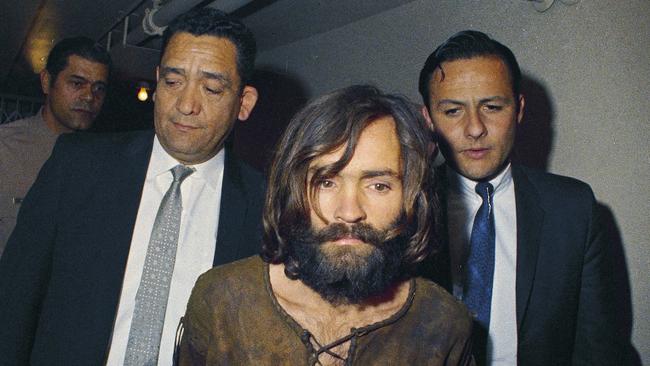
Does evil exist?
For five decades, that question has been answered with reference to just one man: Charles Manson.
Manson was as mad, as evil, as anyone who ever lived and now, at 83, he is dead, a victim of the slow collapse of his internal organs in a California prison where he spent the bulk of his life.
Manson’s death draws a heavy curtain on one of the darkest chapters in US crime history. He was not the first celebrity serial killer — that title probably belongs to Jack the Ripper — but he was the first to attract cult-like status and a slavish following.
The Manson Family, as his hippie-dippy followers were known, would have died for him.
They killed for him instead. In the process, they created a cultural monster: to this day people wear Manson’s face on their T-shirts and bop along to songs written for him. More than one woman tried to marry him in jail, while others — the copycat killers — tried to join him there.
It’s a curious thing because the nine Californian murders committed in his name, at four locations across five brutal weeks in 1969, were characterised by a grotesque cruelty. One victim, actress Sharon Tate, was just 26 at the time of her death and eight months pregnant. She begged for the life of her baby, but Manson devotee Susan Atkins stabbed her in the stomach with a long-blade knife, then smeared her blood on the bungalow’s front door.
None of the victims were known to their killers. They were chosen at random and this, too, became part of the terrible Manson Family lore: they chose their victims at random. The next one might have been you.
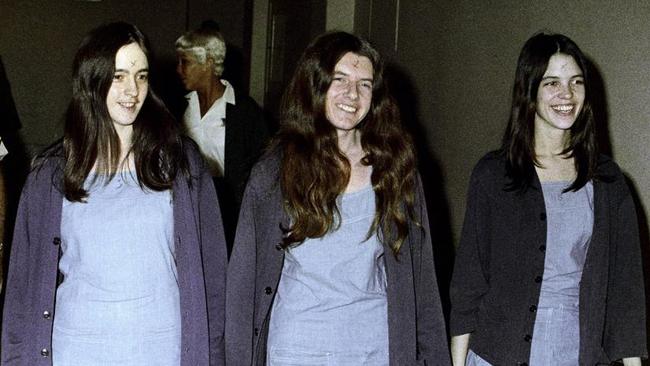
Besides Tate — married to director Roman Polanski, who later would be convicted on child sex charges, prompting him to flee the US — Manson’s victims included two wealthy shopkeepers and the heir to a coffee fortune, a stuntman, a musician and a gardener who was just 18 years old.
Who was the man who inspired these killings?
Manson was born Charles Maddox in Cincinnati, Ohio, on November 12, 1934, to a dirt-poor 16-year-old called Kathleen Maddox. She had no husband and he never knew his father. She was an alcoholic and a prostitute who was jailed when he was just five. He later took his stepfather’s name.
Manson spent some time bouncing around the homes of relatives but soon became a petty criminal who was in and out of boys’ homes and juvenile detention for burglaries, auto thefts and armed robberies.
His life would later become a cautionary tale in the story of parental neglect.
Manson was paroled from the last of the kiddie prisons in May 1954. A short time later he met a 17-year-old girl and moved with her to California. She had a baby and he supported them by stealing cars. In 1956 she left him for another man.
Manson hooked up with a prostitute and had another child, but that relationship ended, too, and by the mid-1950s Manson was on the loose in California.
He stole cars, forged cheques and pimped out women. He tried to get a break in Hollywood, including as a rock ’n’ roll star. He was charismatic and zealous, and into his orbit came many lost and beautiful women, mainly from middle-class homes, who were rebelling against their parents.
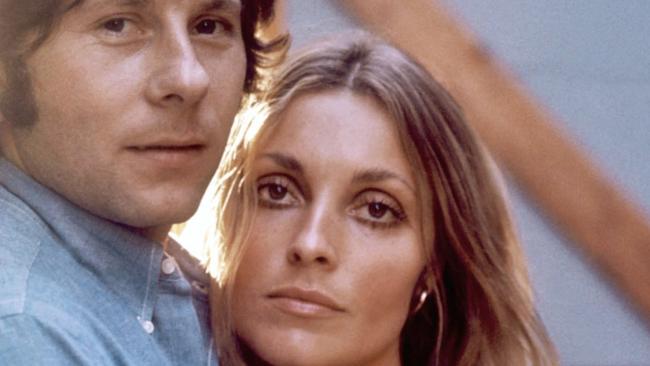
They became the Manson Family. They lived in a San Francisco commune for a time, indulging in hallucinogenic drugs such as LSD and magic mushrooms. They practised free love, and free birth, and violent crime.
By the mid-60s they had moved to a deserted ranch in the Panamint Mountains west of Death Valley National Park.
Manson hosted wild orgies and mad seance-like events, where he would spout total nonsense, as well as verse from the Book of Revelations. Deluded and half-demented by LSD and other drugs freely available in the summer of love, he saw messages in lyrics from the Beatles’ song Helter Skelter from their White Album.
Manson — who was tiny at just over 157cm — believed his Family would form the basis of a master race one day. He spoke of expanding his cult to more than 100,000 people. He was a racist and an anti-Semite who had almost hypnotic power over his followers, especially women. Some believed he was divine. His education had stopped when he was 12, but he would later score high on IQ tests, and he used a potent mixture of charm and drugs and gobbledygook to transport followers to his realm.
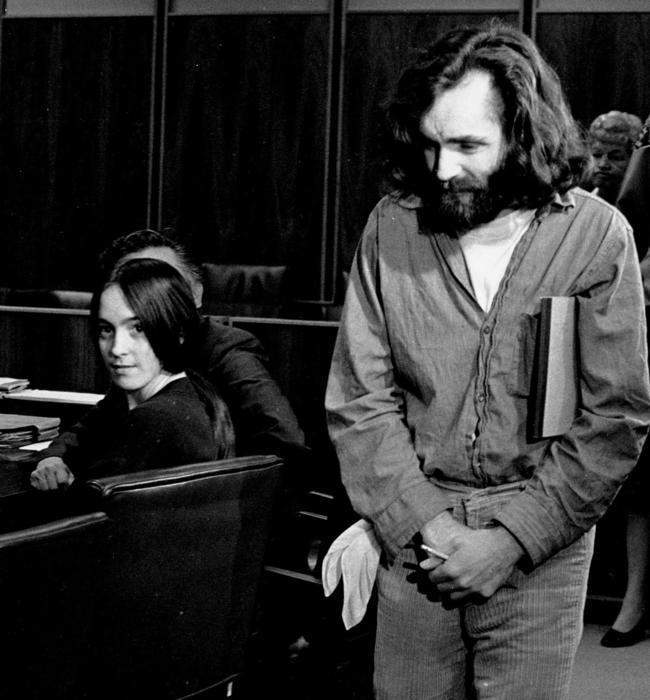
In August 1969, Manson ordered his followers to hasten Armageddon, in which they all believed. On August 9, he dispatched four Family members — Atkins, Patricia Krenwinkel, Charles Watson and Linda Kasabian — to Polanski’s Hollywood mansion. They knew the house — a Family member had some loose connection — but not the inhabitants.
They burst through the door and stabbed and beat and tortured the inhabitants, including Tate; writer Wojciech Frykowski (also known as Voyteck Frykowski) and his partner, coffee bean heiress Abigail Folger; celebrity hairdresser Jay Sebring; and gardener Steven Parent. It was a desperately violent crime, with 169 stab wounds inflicted on the terrified victims. Polanski escaped, for he was in London at the time.
A day later, Manson drove his followers to a different mansion, where they tied up the residents — a wealthy grocer named Leno LaBianca and his wife, Rosemary — and stabbed them to death. At both homes, they wrote in blood on the walls, including the word “pig” and “Healter Skelter” (they misspelled Helter.)
The random and appalling violence gripped the state and the nation. Californians were frozen with fear and the police were completely stumped.
The Family had left false clues, such as the print of bear claw, the symbol of a black resistance movement. They had hoped to start feverish speculation about the black community in Los Angeles and maybe start a race war.
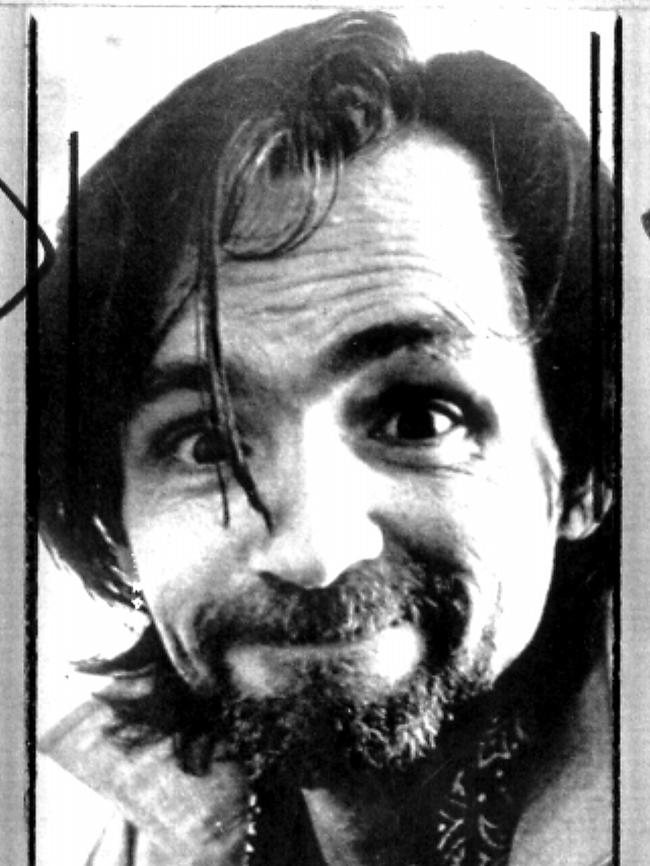
Then one of them — Atkins — got arrested, and bragged in prison, telling an inmate they “wanted to do a crime that would shock the world”. Police swooped and in 1970 Manson and three of his followers — Atkins, Krenwinkel and Leslie Van Houten — went on trial in Los Angeles.
The appalled American public got their first look at Manson during the trial. There was something deeply unsettling about his eyes. It was said that they could hypnotise. The young women and their hippie supporters appeared to be entirely under Manson’s spell.
Prosecutors agreed, depicting Manson as the mastermind of the murders. He was not there when Tate and her friends were killed, but the Manson family acted on his orders because they were “slavishly obedient to him”, according to lead prosecutor Victor Bugliosi.
Manson also came to represent the underbelly — the Satanism, the drugs — of the counterculture movement.
Manson maintained his innocence, telling the courtroom in 1970 that American society should bear the responsibility for their crimes. “These children that come at you with knives, they are your children. You taught them; I didn’t teach them,” he said.
At one point, Manson appeared in court with an “X” carved into his forehead. He later turned it into a swastika. Huge crowds gathered, many of them Manson devotees, who would sing, chant and swing their beads.

Manson and his followers were sentenced to death for the seven murders, later commuted to life. Manson also was convicted, separately, of two additional murders, of musician Gary Hinman and Hollywood stuntman Donald Shea, that also were carried out by supporters before the Tate murders.
He occasionally had a tough time in prison — in 1984 he was treated for second and third-degree burns after being doused with paint thinner by a fellow inmate and set ablaze — but he also received mountains of mail, did TV interviews and even got engaged to a 19-year-old girl (the marriage never took place.)
He tried for parole several times, but officials were never going to give it to him. His crimes were too monstrous. Plus there was the allure. How many killers have been inspired by Manson? What might he have done had he been released into the arms of deluded devotees?
Manson’s crimes have inspired a cultural legacy: the book, Helter Skelter (1974), by Bugliosi (with Curt Gentry) is to this day regarded as a near perfect analysis of the killer, his capture and the culture he inspired. There have been other books, songs, movies, even an opera. Pop star Marilyn Manson is said to have taken his name from the Manson; and television’s South Park even featured Manson in a Christmas special.
He was never really out of the news, but over time the hair became grey and the swastika carved on his forehead began to fade, although the eyes never did.
To the end, he had that mesmerising, evil charisma. Put to good, imagine what he might have done. But he put it to evil instead.
Manson was admitted to hospital earlier this month, suffering stomach pains. His death was announced, naturally enough by press release, at about 4pm AEST, with the California Department of Corrections and Rehabilitation saying that Manson had died of “natural causes” following gastrointestinal bleeding.
He rotted in jail, in other words. It’s what most people wanted.




To join the conversation, please log in. Don't have an account? Register
Join the conversation, you are commenting as Logout